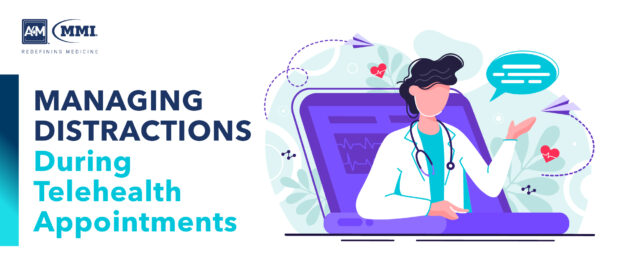\With the advent of telemedicine came several challenges not limited to IT security, patient-provider connection, and a host of technological issues. As the adoption of digital medical care is now relatively widespread, there is a new challenge facing telehealth – distraction. According to new survey data, approximately 44% of Americans engaged in a telehealth appointment during the COVID-19 pandemic and a significant proportion of those also reported multi-tasking or being distracted by other tasks during their visit.
Multi-Tasking During Appointments
An online survey conducted by health technology company DrFirst was completed by 1,002 adults in the United States in June 2020. Of total respondents, 73% of male and 39% of female telehealth patients reported being distracted during their virtual visits.
Most commonly, patients reported online surfing, checking emails, and texting (24.5%) as well as watching television (24%) to be distractions. Participants also reported checking social media (21%), eating a snack or meal (21%), playing video games (19%), and exercising (18%) during appointments. Furthermore, up to 11% reported smoking cigarettes, 10% drove a car, and nearly 10% even reported having an alcoholic beverage while on a telemedicine call.
Although, patients are not the only ones who may be distracted or multi-tasking during telehealth appointments; physicians have also reported that they are often disrupted by notifications appearing on their screens during virtual visits.
Minimizing Distractions
According to Dr. Nancy Stewart, assistant professor of medicine at the University of Kansas Medical Center, distractions during medical visits are something she has frequently noticed with patients who have been driving, working, or even cooking during appointments. Dr. Stewart has had to, in several situations, “request that the patient pull over or stop what they are doing so they could finish the visit without distraction,” she told Forbes. “Most patients are receptive to this and apologize.”
Although healthcare professionals have now developed “webside manner” and guidelines for clinicians engaging in virtual visits assist them in delivering professional care online, there are few rules and little guidance for patients. As such, it may be necessary for healthcare professionals to encourage patients to utilize in telehealth best practices, such as recommending a quiet, well-lit area for the appointment, silencing their phone during the visit, and turning off notifications. Providers may also help patients remain focused and engaged by asking them to repeat back what was discussed to confirm their understanding, recommending a notebook or pen and paper to take notes, and maintaining eye contact when possible.
Since direct video-to-video presence can influence patient behavior, clinicians may urge the use of video communications to maintain visual contact. Approximately 29% of patients reported they would dress more nicely to a video appointment compared with 14% who reported they would wear pajamas.
Nonetheless, if patients remain very distracted or are in a hectic environment, providers may politely recommend rescheduling the telehealth appointment to better serve the patient’s need and schedule.
The challenges of widespread telehealth implementation may be daunting now that another wave of the COVID-19 pandemic pushes a growing amount of healthcare services back online and many patients continue to avoid in-office visits out of fear of virus exposure. However, patient engagement is a critical component of effective healthcare delivery and efforts to maintain patient attention need to be made as often crucial information is missed due to distraction, impacting both treatment adherence and health outcomes.

